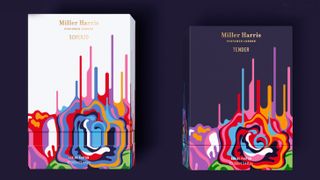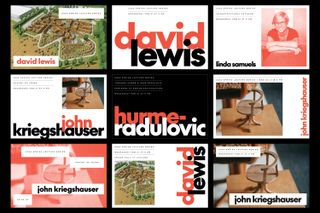Why designers should embrace being uncomfortable
Executive creative director Sean Thomas on how breaking out of your comfort zone can lead to surprising results.

My art teacher once ended our monthly life drawing session with a quick exercise. We first took sheets of paper decreasing in size from A1 to A6, and then lined up materials increasing in size, from a fine-haired brush to a solid block of paint. As the exercise progressed, we were given less and less time to capture the model’s changing poses, with the canvas reducing as each implement grew in size.
It was frenzied, instinctive mark-making that made me feel increasingly uncomfortable. The culmination of the lesson saw us grab a solid block of unwieldy, wet, black paint which spawned – in five seconds – the most exciting piece of art I’ve produced.
For years, I couldn’t put my finger on why I loved that lesson so much, but recently I realised it was because the outcome surprised me. I simply couldn’t believe I had produced this work. It was as if it had just appeared through a surge of nervous adrenaline or someone had possessed me. And it felt good.
Evolve and adapt
Regularly moving out of our comfort zone is something we have vowed to do more at Jones Knowles Ritchie. Not because it makes us money - often that first attempt at something is costly and difficult - but because it’s exciting, and because learning new things is invaluable.
The best brands stay relevant and adapt to evolving times. They don’t fall by the wayside. Brands will endure for as long as they find pertinent things to say and create, and I think clients, designers and agencies are no different.
In the time I’ve worked in the industry, I’ve seen design shift hugely, and it’s never been more thrilling. And in my eight years at jkr, the business has already undergone two big transformations. At one point, it was paying people to look for talent and clients, rather than attracting them through the work. So the owners shook everything up. They made decisions that could have fundamentally broken a successful agency and put their faith in the people hungry to prove themselves, under the mentorship of those who had got the company this far.
The results were unorthodox but transformative. Design and strategy directors now effectively lead their own mini studios, account managers with a love of words have become copywriters, our 70-year-old typographer teaches every graduate how to create their own font, the head of workshop who displayed an interest in animation now runs a filmmaking team, our 3D packaging experts are running client workshops. Bit by bit, those same clients who told us they didn’t have any more work for us have commissioned jkr to fundamentally overhaul their brands from top to bottom.

Learning curves
It has been a brilliant, rewarding and terrifying era of my life. We were going into pitches diverting from the given brief in favour of what we believed the real issue to be. We were responding to clients with a single solution, knowing we’d lose the account if they disagreed. We were turning away projects, because they didn’t motivate us or benefit the brand. We were asking people to do things they’d never done before.
And of course, we failed. Countless times.
But we learned from those experiences and we also benefitted from them. All of this helped us figure out who the most proactive members of staff were, what our clients were looking for that we couldn’t yet offer, who was doing the wrong job and what sort of work we wanted to be doing as a company.
If you choose to play it safe, repeating the same old tricks, you will miss an opportunity to empower the next generation of creatives
This period also made me realise the importance of relinquishing control. There have been high profile rebrands I personally didn’t love aesthetically; however, the team had been so passionate, I held my tongue and slept on it. At the time, that feeling made me deeply uncomfortable – do I let something leave the building I don’t like? Or do I shatter a passionate, emerging team’s vision? As the work answered the brief, I took the call to see what happened and embrace the uncertainty. These projects have become two of jkr’s most warmly regarded.
I’m no different to the majority of people working in the creative industry. I dread someone coming up behind me, tapping me on the shoulder and saying, ‘I’m onto you and we all realise you’re clueless’. Putting a bit of yourself onto a piece of paper (or a screen) and having it torn to shreds never gets any more fun. But if you don’t keep doing it and you choose to play it safe, repeating the same old tricks, you will miss an opportunity to empower the next generation of creatives to follow your lead. And remember what happens to the brands that do that?
To this point, I’ve realised you create your own luck. So my advice to anyone who asks me now is this: go in the direction that looks most interesting, no matter how illogical it seems. And if you’re not inspired by the people around you, leave.

Thank you for reading 5 articles this month* Join now for unlimited access
Enjoy your first month for just £1 / $1 / €1
*Read 5 free articles per month without a subscription

Join now for unlimited access
Try first month for just £1 / $1 / €1
Get the Creative Bloq Newsletter
Daily design news, reviews, how-tos and more, as picked by the editors.




